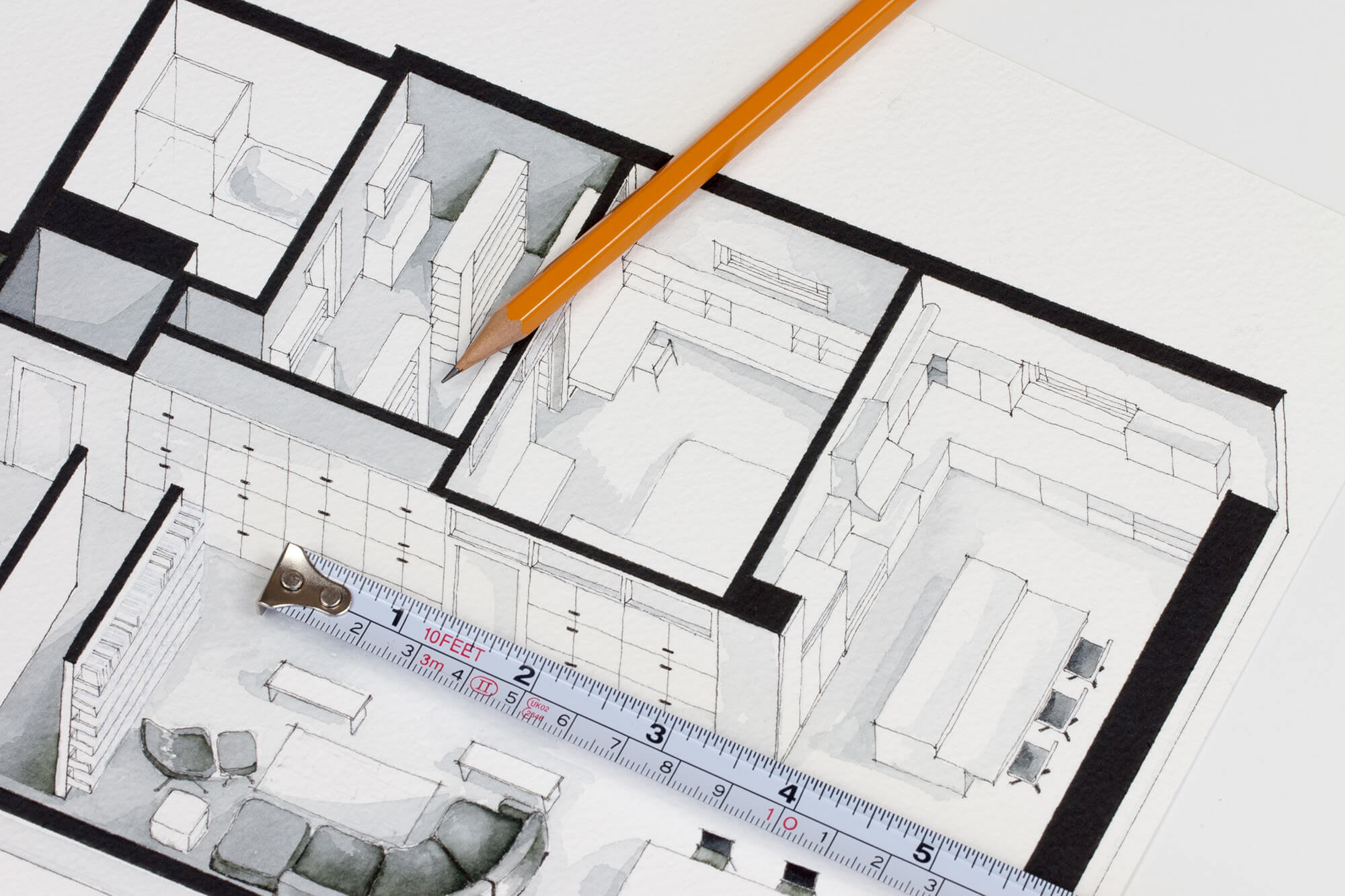A guide to extending your home by builders in North London

Finding advice from our builders in North London about extending your home will help you make the right decisions to create a home that will suit you and your family.
Where to start when building an extension?
Instead of moving home, extending your property is a great way to increase space and add value. But, many people who decide they want to extend their home are unsure about where to start. Whether you are thinking of carrying out a rear extension, side extension, double extension or garage extension, there is a lot to consider. This article will help you understand how to get started to create the home you have always desired.
House extension designs
The first thing you need to do before starting an extension is to think carefully about what type of extension you need. Looking for design ideas for a house extension will help you to make the best decision for you, your family and your home. Take a look at the extension ideas we have listed here.
Reconfigure your existing space
It will benefit you if you initially think about how reconfiguring the existing footprint of your home will help the new extension work. This will allow you to establish the best layout to make the most of your views, natural light and privacy. Keep in mind that internal walls and doorways can be added or removed if needed so you can achieve the space you require and to also integrate the extension.
Think about a two-storey extension
If your home allows for it, a two-storey extension might be a good option for you if you are looking to achieve the maximum value for money with your new extension.
What materials do you choose for your extension?
When you extend your home you can either choose a contrasting style that complements your existing home or you can make the extension look like it has always been part of your home. If you choose a contrasting style, this is a bit more difficult but can be done well if you make sure you copy key design elements, the roof pitch and the brick bond and mortar colour.
Use the ceiling space
Tall ceilings can transform a room and an extension gives you the option to add this feature. Where an extension is beneath a pitched roof, there may be the option to create a vaulted ceiling. This can be done by instead of building a flat ceiling with a void above, you can fit insulation within the pitched roof structure to create this feature.
Use a glazed link
You may find it difficult to find the right design to complement your existing property, especially if you have a period home. If this is the case one possible solution is to join the extension and current property with a fully glazed walkway. This walkway will reduce the visual impact and not alter the original building’s character.
Consider using Pocket doors
If you are not sure of you want open plan living or want to enclose the extension with a wall, consider using fitted sliding pocket doors. When these doors are closed, they can give the impression of a wall but when they are opened they can disappear within the wall, giving the illusion of a clear opening.
Use obscured glazing for privacy
Natural light is key when thinking about an extension but if you will be overlooked by neighbours or people walking on the street or down an alley, obscured glazing would be ideal. This type of glazing will allow you to get the benefit of daylight but without anyone being able to look in or out.
Think about an annex
If you have a garden large enough, an annex might be a better solution than extending an existing house. By adding a kitchen, bedroom and bathroom the annex could be used as self-sufficient accommodation.
First stages of building an extension
Advice from our builders in North London state that when you have decided on the design for your extension, you need to then carefully consider all the stages you need to think about before building actually begins.
Shared walls
The work from your extension will need to comply with the Party Wall Act if building your extension involves building or digging foundations within 3m of the boundary, party wall or party wall structure or if you are digging foundations within 6m of a boundary.
Access to the site
You need to think about how trucks and lorries will reach your property to unload large items and materials. You will also need to consider where builders will park or store their tools.
Will your services cope with the extension?
It is important to give your current services a health check as you cannot just assume your heating, plumbing and electrics will cope with the additional space that will need lightning and heating. You might need to consider having underfloor heating rather than replacing your boiler.
Notify your insurer
Think about notifying your insurer of any extension work as some may not provide cover during the work, or you may need to get additional cover.
Check if you need planning permission
In many cases you may be able to build an extension under Permitted Development but you need to check this with your local authority. If you are planning a significant extension you will likely need planning permission and will need to submit an application. It is a good idea to discuss your plan with your local authority and research local planning policies.
Comply with Building Regulations
Regardless if you require planning consent or not, you will need to make sure you comply with building regulations. Again, contacting your local authority about this would be a good idea.
Is your property a listed building?
If your property is a listed building you require consent for any alterations you will carry out. It is a criminal offence to alter a listed building without consent.

Building an extension checklist
When building an extension there is a lot to think about so our builders in North London, Smart Building Solutions, have put together an extension checklist. You may find this checklist helpful when carrying out an extension to your home.
- If required, obtain planning permission.
- If required, begin the party wall agreement process.
- Compare quotes from trades.
- Decide if you will project manage the extension yourself.
- Agree timescales and schedules from trades to avoid delays.
- Organise the hire of toilets if needed.
- If you are planning to live on site, arrange the schedule to minimise the impact on daily life.
- Speak to insurance company and arrange renovations insurance if needed.
- Let your neighbours know about the extension.
- Think about access to your property for delivery lorries and space for skips.
- Order materials needed and decide on best delivery times.
- Make space to store materials safely.
- Notify building control that work is starting.
- Ensure water will be available for cement mixing and plastering.
- Think about where you want lighting and sockets as early as you can.
- Allow time in your schedule for plaster to dry before decorating.
Building an extension can add more space and value to your property and is more economical than moving house, but can at times be quite stressful. Remember, if you think carefully about the design, complete any required paperwork and have a clear plan in place before the build starts, it will become much less stressful for you and your family.
We hope you have found this information about house extensions useful. If you have any more questions, please contact our builders in North London, Smart Building Solutions by email office@smartbuildingsolutions.co.uk or by phone on 020 3151 9989.

